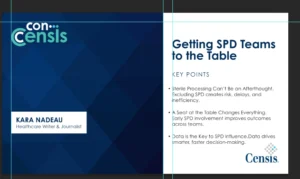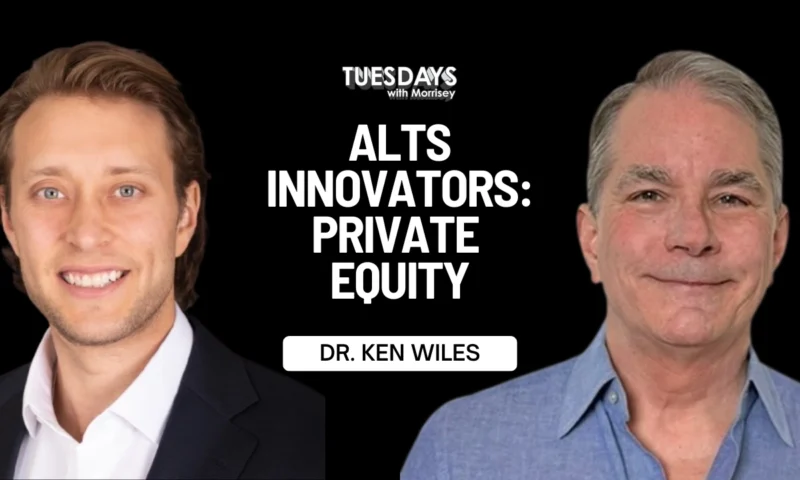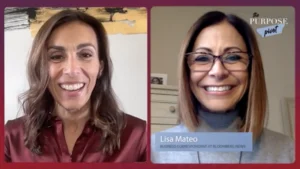Why July’s Consumer Price Inflation is Forcing Businesses to Reckon with Hiring Strategies
After weeks dotted with interest rate hikes, mortgage rate oscillation, and dropping energy prices, U.S. businesses and consumers finally got a fresh look at the nation’s inflationary climate and whether or not monetary policy is having its intended effects. On August 10, the Bureau of Labor Statistics released the most recent consumer price index for July, and the results were unexpected across the board: while core inflation is still high, it seems consumers and businesses can take a sigh of relief as, for at least one month, consumer-side prices stagnated their growth. What does this mean for enterprises and SMBs?
Inflation Stagnates as Consumer Prices Increase by 0.0%
Expectations around July’s consumer price shifts were relatively optimistic before the announcement; consensus ranges estimated that price increases would slow down, with rates lower than last month’s and last year’s comparable periods. Here’s where analysts landed for July’s CPI consensuses prior to release:
- M/M CPI: 0.2% Consensus, 0.0 – 0.4% Consensus Range
- Y/Y CPI: 8.7% Consensus, 8.5 – 9.1% Consensus Range
- M/M CPI, Excluding Food & Gas Prices: 0.6% Consensus, 0.4 – 0.7% Consensus Range
- Y/Y CPI, Excluding Food & Gas Prices: 6.1% Consensus, 5.9 – 6.2% Consensus Range
…and here are the final July numbers from the BLS’ report:
- M/M CPI: 0.0% Actual
- Y/Y CPI: 8.5% Actual
- M/M CPI, Excluding Food & Gas Prices: 0.3% Actual
- Y/Y CPI, Excluding Food & Gas Prices: 5.9% Actual
Simply put, the biggest news from the report was that inflation slowed down; month-to-month consumer prices increased at a rate of 0.0%, effectively staying flat compared to last month’s release which reported a 1.3% M/M rise in consumer prices. Year-over-year, inflation grew by 8.5%, less than last month’s heavily-discussed 9.1%. Both of these actual rates of increase to consumer prices came in below consensus at the low-end of the consensus range, which is always a welcomed surprise. For all businesses, especially large enterprises, these price increases are having a daily and tangible impact on their short-term expenditures and sales strategies.
“As a corporate director, I’m looking for market sentiments. I’m looking at interest rates and what’s gonna drive interest rates. I’m looking at risk. Those are the key things that I need to pay attention to, that companies are paying attention to right now,” said Dr. Joanna Massey, CEO of JDMA Inc. and current board member for the Hollywood Foreign Press Association and KULR Technology Group.
Experts are saying this is, hands down, good news compared to the alternative of continuously-rising inflation. However, one month of slowing inflation isn’t great news per se, considering July’s CPI numbers showed prices are still going up, and that inflation is plateauing more than reversing. If current inflation levels persist through August, it’s unlikely the Fed will be satiated enough to rethink its monetary policy. Further demand destruction is still on the Federal Reserve’s docket for September, and this relationship between CPI updates and the Fed’s monetary policy is where businesses should keep their focus as they prepare for next month’s updates.
“We effectively just went back to exactly the average rate of increase inflation that we had for March through May. So we are not in any way out of the woods just yet. And I know that the markets appear to be saying that a 50 basis points increase is now back in play, which it is, but I don’t necessarily see the Fed looking at this and saying, ‘okay, we can begin letting up’ because core inflation is still vastly above their target,” said Erik Stettler, chief economist with high-end freelance platform Toptal.
More Interest Rate Hikes Are On the Menu as Core Inflation Remains High
Excluding changes in food & energy prices, which represented much of the price volatility in recent months, helps reveal why a one month stagnation of inflationary trends isn’t enough to give businesses, or the Fed, enough clarity on how to move forward. While month-over-month core inflation slowed to 0.3%, which was both below consensus and lower than last month’s core increase of 0.7%, year-over-year core inflation grew at exactly the same rate of 5.9%.
Critical gauges of consumer spending power, like cost of shelter, medical care, and non-food commodities, aren’t giving optimistic readings. Reports like Realtor.com’s are finding that rent costs are more affordable that mortgage payments in the 75% of the U.S.’ biggest cities, while retailers increasingly seek to pass on costs in the form of higher prices as product sourcing gets more expensive.
These trends were reflected in July’s CPI core numbers, which continued their trend of M/M and Y/Y increases.
- M/M Shelter: 0.5%
- Y/Y Shelter: 5.7%
- M/M Medical Care Services: 0.4%
- Y/Y Medical Care Services: 5.1%
- M/M Commodities Less Food & Energy: 0.2%
- Y/Y Commodities Less Food & Energy: 7.0%
“Rent is still up and packaged goods are still up. If you’re buying frozen pizza and frozen dinners for your family or you’re buying take out Chinese food, you are still paying more and that still hurts,” Massey said.
A sizable portion of July’s price changes came from the energy sector; prices for fuel oil dipped by -11% M/M, while all energy prices decreased by an average of -4.6% M/M. Honing in specifically on retail gasoline prices for the month, the national average cost per gallon dropped from $4.87 in late June to $4.19 by the start of August. This played an important role in stagnating consumer price changes for the month, but even this easing away from record high gas prices wasn’t enough to counteract other inflationary factors.
“The good news of course, is energy pervades everything else…so hopefully this will begin to make its way through other parts of the CPI, but we haven’t seen that just yet and the core elements of housing and food and things that really affect people on a daily basis are still above where they should be,” Stettler said.
If essential consumer costs like shelter, insurance, recreation and medical care are all staying put at high prices, then even a month of slowing inflation means consumer budgets are still highly stretched. The economy remains in a precarious situation as long as core inflation persists because, if Jerome Powell’s recent Jackson Hole speech is any indicator, the Fed’s response will continue to focus on disincentivizing borrowing and lending.
“July’s increase in the target range was the second 75 basis point increase in as many meetings, and I said then that another unusually large increase could be appropriate at our next meeting,” Powell said. “Restoring price stability will likely require maintaining a restrictive policy stance for some time.”
This blow to investment demand through further interest rate hikes will impact businesses the same as, if not harder than, consumers.
“One of the most important things about the CPI and what everybody’s talking about…is trying to predict where the Fed’s gonna go with interest rates. Because ultimately when you’re talking about business, you’re talking about their ability to get money. Debt and equity. How cheap is it for me to get some debt or equity so that I can grow, so that I can move, so that I can purchase, so that I can do other things and better lever the company and lever it in a smart way,” Massey said.
What the July Jobs Report Tells Us About Consumer Price Changes and Inflation-Response Strategies
The other most important takeaway for businesses from the July CPI report is understanding the relationship between consumer price increases and the recent July Jobs Report, which showed that average hourly earnings grew both month-over-month and year-over-year above consensus levels, while also adding over 500,000 nonfarm payrolls to the economy, more than double the consensus.
“For core CPI, I would say, you’re effectively looking at the prices that are being charged to consumers by businesses and that is the effect of the prices that businesses are then facing on their end. And obviously their workforce is often one of the single biggest categories, if not the biggest in terms of their cost structure,” Stettler said.
July’s employment report showed that employers across every sector were filling their open roles beyond expectations, locking in another month of around 3.5% unemployment. Even though inflationary pressures are tightening business and consumer budgets, a stable unemployment rate means workers can be choosy about their next opportunity. Employers in need of fresh talent, therefore, are finding that they have to raise wages to stay competitive and attract said talent in a competitive job market.
This wage creep is being exacerbated by the fact that increases in average hourly earnings aren’t being reflected in real wages; even if workers are getting paid 0.5% more on average than last month and 5.2% more on average than last year, inflation is massively outpacing any of those gains. Employers, in turn, have to continue to make up the difference if they want to capture employees from top talent pools.
Higher wages means higher operating costs, and those costs have to be made up somewhere. Businesses have to either operate with lower profit margins, or they have to pass along the costs in their consumer-facing prices. Of all the factors shaping consumer prices, experts believe the outcome of long-term employment stability (and the potential consequences of Larry Summers’ imagined 10% unemployment) will have an outsized influenced on future CPI reports.
“I think that biggest things investors should be looking at right are how does the labor market play out over the next few months? If that shows signs of stabilizing, that may be what truly allows a plateauing,” Stettler said.
With August’s CPI report just around the corner, Stettler and Massey advise for corporate decision makers to let go of narrow and reactionary post-CPI strategies (or as Massey puts it, a “myopic quarterly to quarterly game”) and to stay looking at the long-term to inform investment strategies during this period of inflation. Even if wage costs are high, recruiting top talent is an expense businesses should bite the bullet on for long-term recovery. Targeting labor with short-term cost cutting may save on payroll expenses for the rest of the year, but finding trained and highly-skilled talent in the inevitable recovery period, especially in a competitive job market and competitive business landscape, will be difficult, sluggish and expensive.
“My main thing as a corporate director is I wanna hold onto my people. I was just talking to one of my CEOs last night on a company that I consult for and asking him what his pain point is, and his number one pain point still is recruiting and retaining people,” Massey said.
Raising consumer-side prices even further could help offset rising OpEx, but businesses are advised to respond to July’s CPI in such a way that will support, not hurt, their ability to keep quality talent and make it through to a recovery period. If every business makes the calculated decision to offset their rising expenses by upping consumer-facing costs or charging more for B2B supply contracts, they could inevitably throw gas on the fire and stimulate more inflation, more destruction demand, and more chances for a disastrous recession.
Businesses should also keep in mind that, even if average hourly earnings are increasing month-to-month and operating costs are higher than usual, increasing wages likely won’t tip the economic scales toward a recession. Recent EPI research shows that the wage ceiling is still much higher than where it currently sits, finding that rising inflation has “unambiguously not been driven by tight labor markets pushing up wages.” This means that if businesses can properly budget for the wage expense, they could get away with giving employees more buying power and not overheating the economy.
Naturally, looking at an inflation-ridden, potentially recession-prone economy and deciding to invest more dollars could seem counterintuitive. From Massey’s experience, this hesitance to invest during market uncertainty comes from a similar place for consumers and businesses alike, and isn’t always an accurate basis for a sound investment strategy.
“Purchasing is psychological. I’ve got a Ph.D. in psychology, let me tell you, spending and buying is 99.9% about how you feel about money,” Massey said. “I’m sitting in the board room and we’re trying to figure out, do we spend, do we pull back, what do we do? You’re going to find a lot of those companies being much more conservative in this moment and not wanting to.”
In the face of plateauing and possibly-receding inflation, strategies that prioritize talent retention will be a critical metric for gauging which companies are going to weather the storm.
“Businesses are facing this conundrum where they would love to increase prices a bit more, but they do not wanna risk really having the Fed lay down the hammer that causes a more severe recession, because they’re already facing declining GDP in the context of declining productivity as well,” Stettler said. “I would say to business leaders, there’s a reason that my career trajectory over 20 years from finance and business in various respects led me to talent sourcing and with a focus on open and global talent sourcing…. I challenge you to find one CEO who will not tell you that talent is the driver of competitiveness, getting the right people and getting them to stay with you.”
Broadening the Scope of Top Talent Hiring Strategies During High Inflation
Stettler, who works with “top 3%” freelance network Toptal, has seen firsthand how businesses are expanding their hiring strategies to include contractual remote talent for mission critical “knowledge jobs,” which is allowing for more flexible variable costs and more targeted labor expenditures during times of economic uncertainty. Companies and organizations like Shopify, Kraft Heinz, USC and Bridgestone have all filled essential roles for software development, UX/UI design, finance, M&A consultation, project management, and more through Toptal.
To frame up the progression of this trend, Toptal shared some internal data with MarketScale from the last three years, which shows…
- contingent sourcing requests grew by more than 70% between September 2019 and September 2021.
- a 60% increase in talent applications from March 2020 (750,000) to May 2021 (1.2 million).
- the first nine months of 2020 alone saw the volume of applicants wanting to join Toptal increase by 55% compared to the same period the year before.
These trends underscore the rapid adoption, accelerated by the pandemic, of a more open and flexible way of working and sourcing talent. Toptal says it’s a strategy that business leaders and investors should increasingly look to as they navigate this tight labor market and unpredictable macroeconomic climate.
“I would tell investors…that is probably the most powerful forward indicator of business performance right now, is how much do they appear to be taking on these new technologies and techniques to bring their sourcing and working with talent to into the next century,” Stettler said.
And not for nothing, almost every metric we broke down in this article from the July CPI and the July Employment Situation reports was a surprise to economic analysts. Consensus ranges and predicted final rates of increase for both consumer prices and hourly earnings were off the mark, and by significant amounts in some cases. Again, nonfarm payroll additions were twice as high as the official consensus. Even though the shattering of expectations was an overall positive this month, it’s another sign that businesses should take these reports with a grain of salt and keep their market-moving indicators diverse.
“The former commissioner of the Bureau of Labor Statistics in a recent interview said directly, the pandemic showed starkly, that was her word, how we need new indicators that are more real time, that take a more holistic view of the labor markets, that give us that optionality value to make decisions more quickly,” Stettler said.








